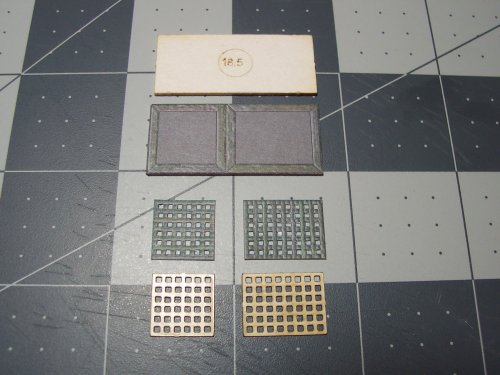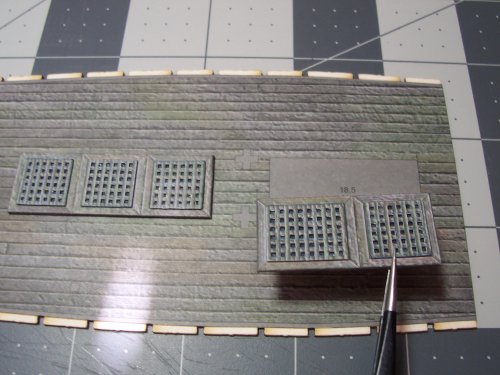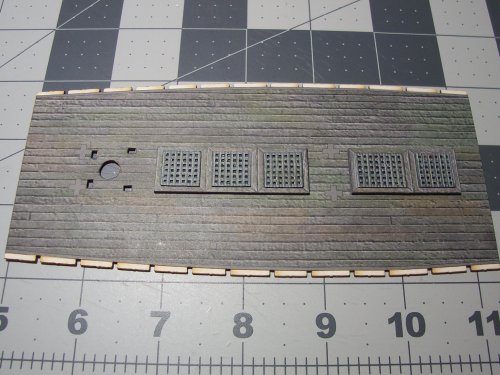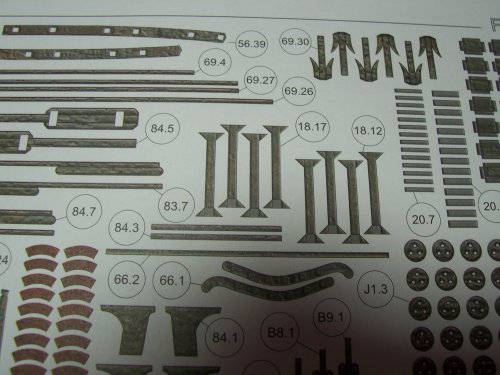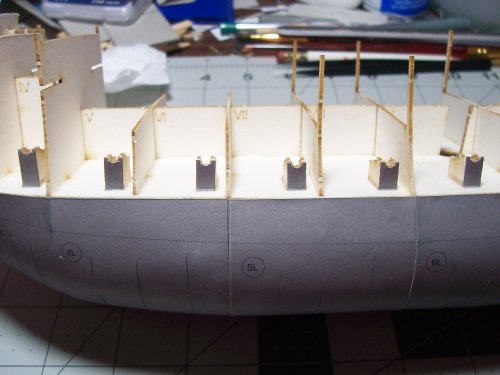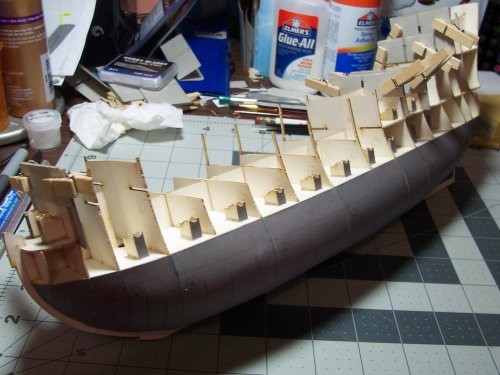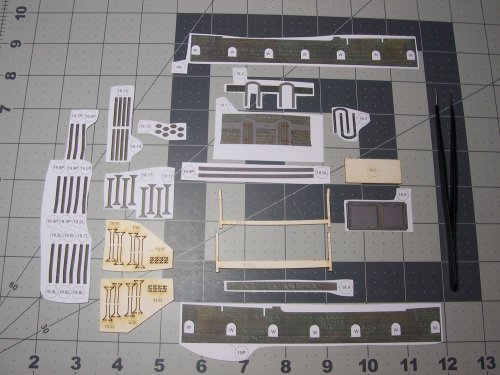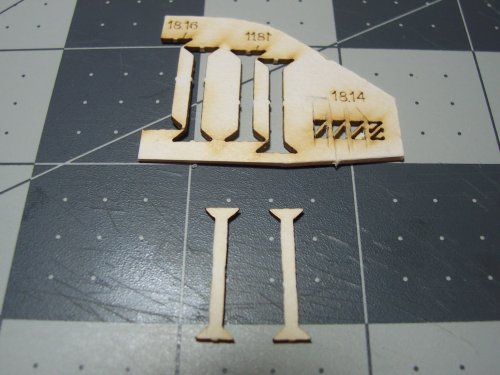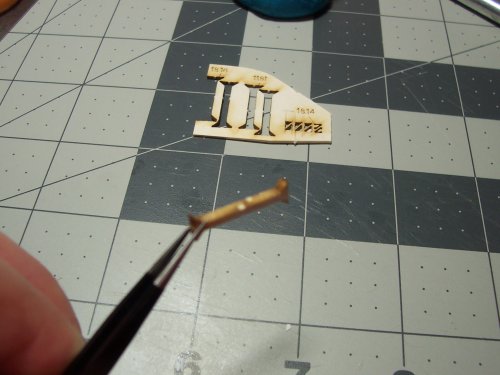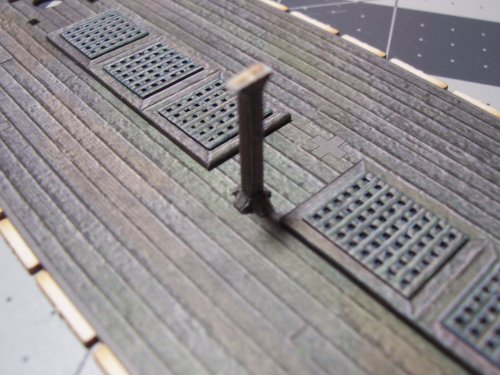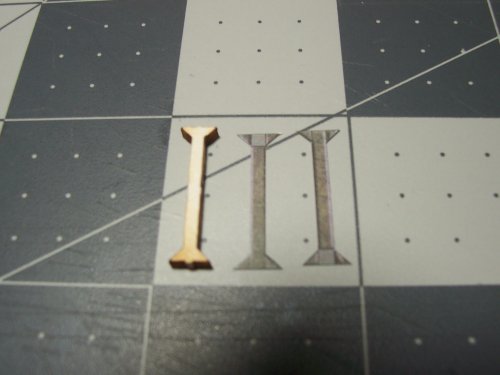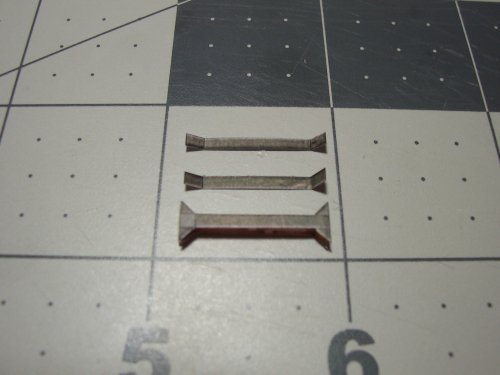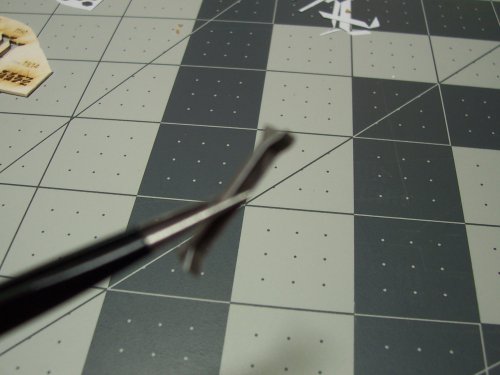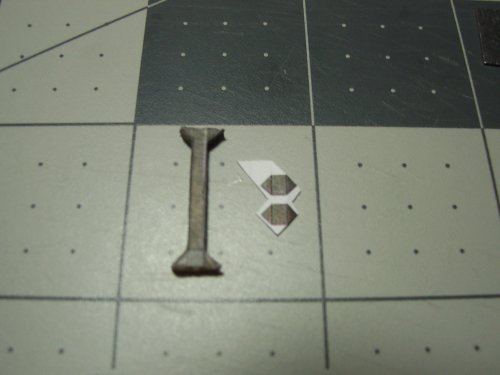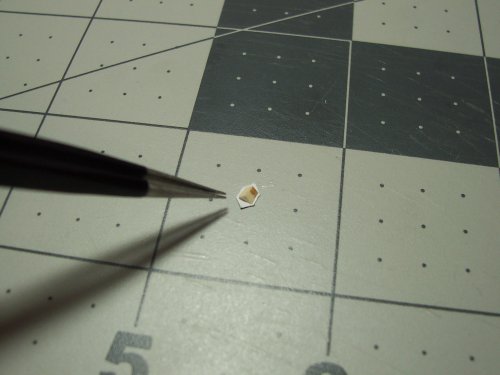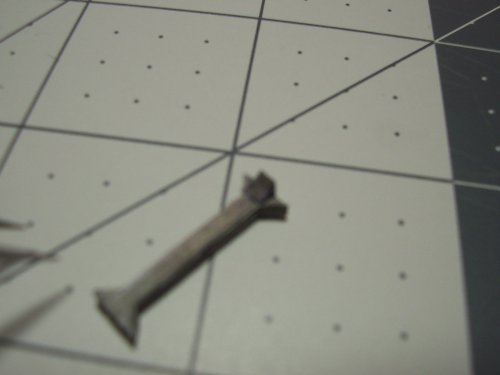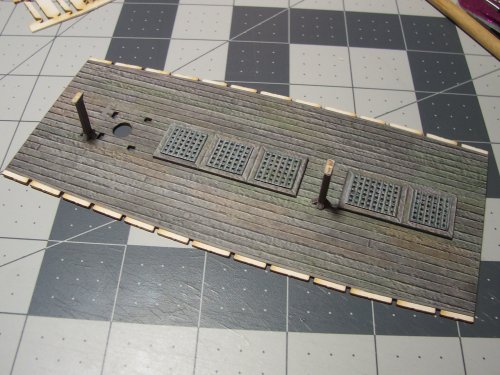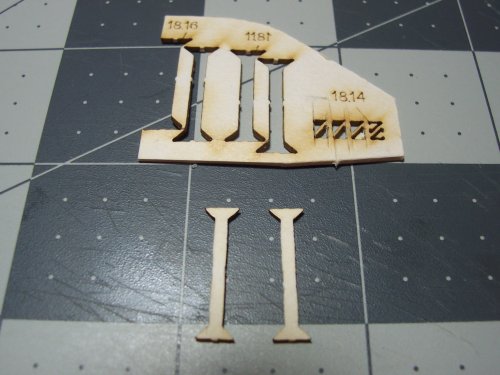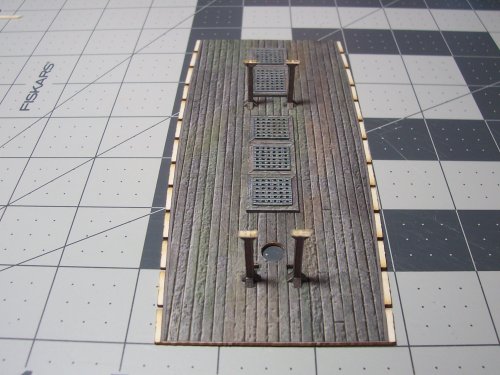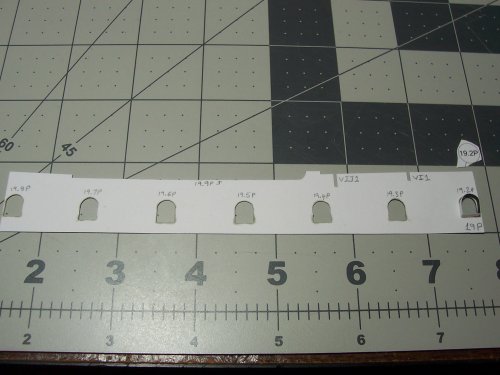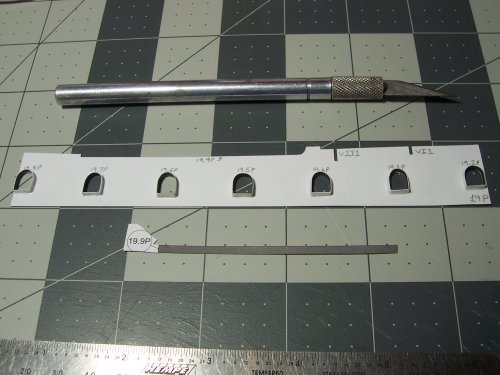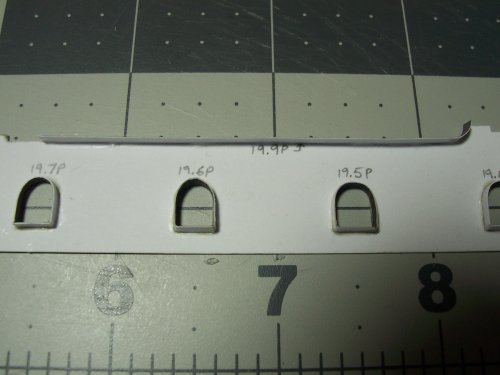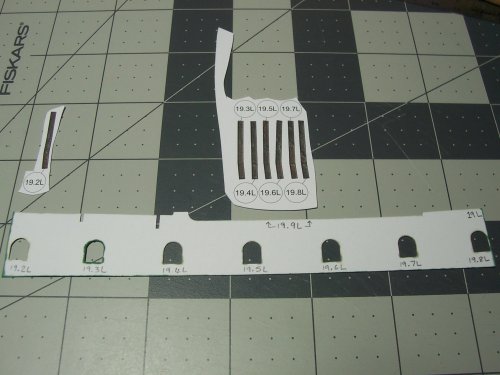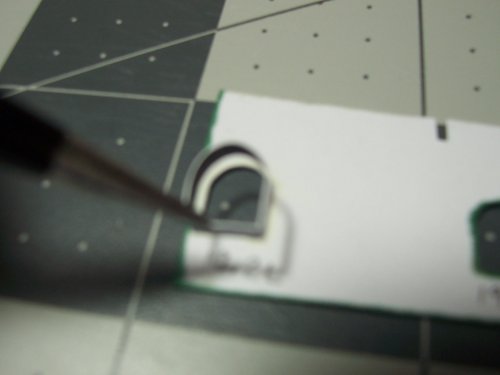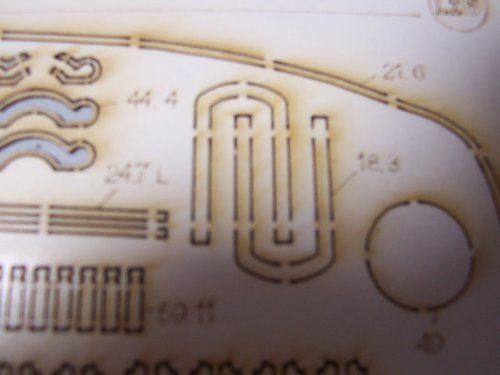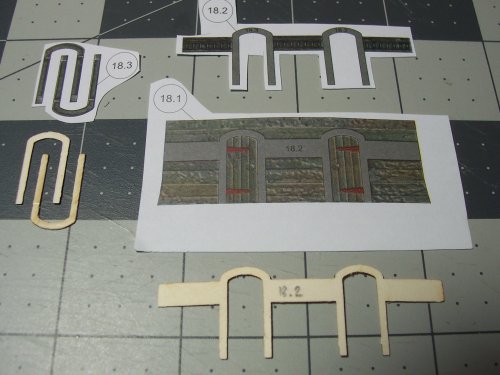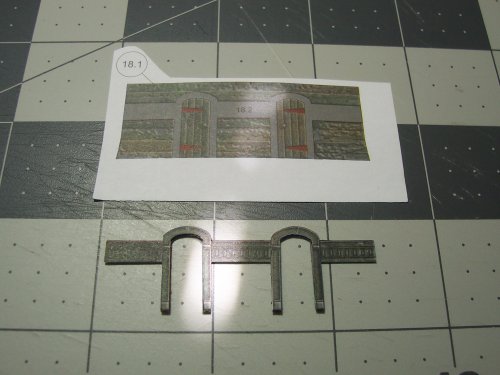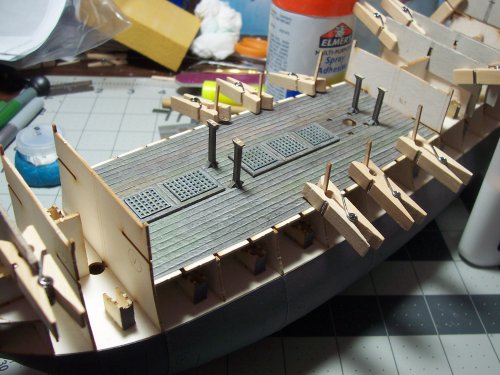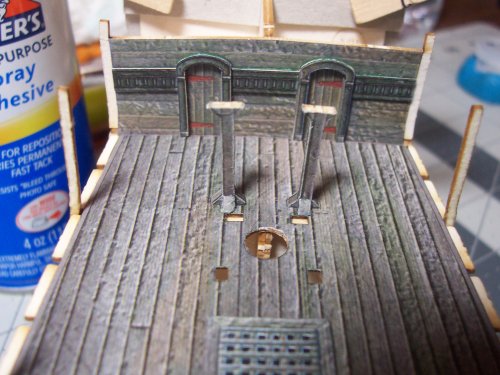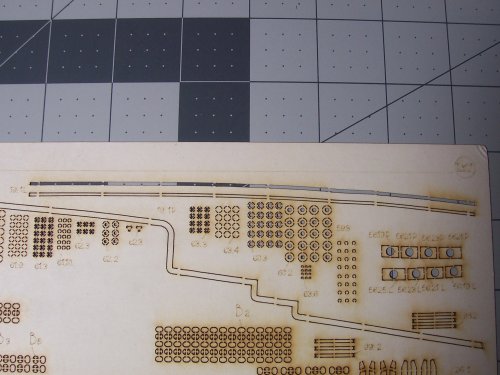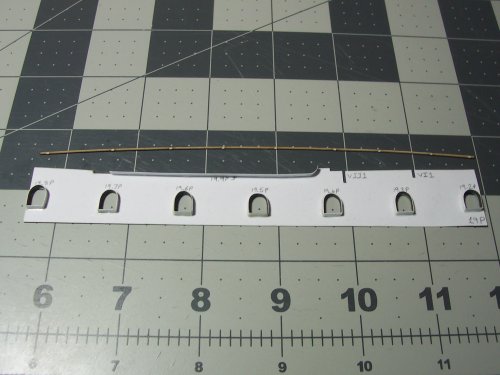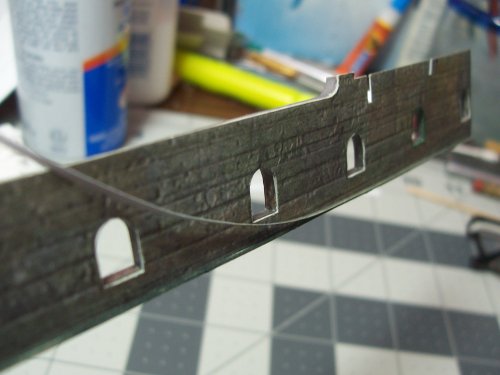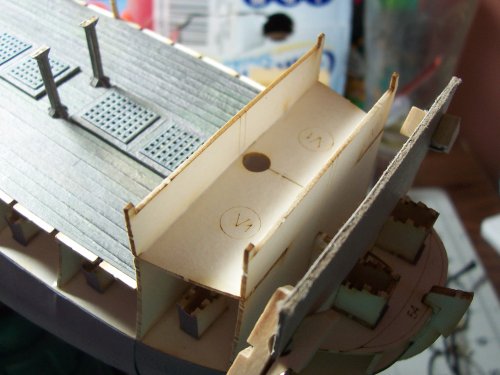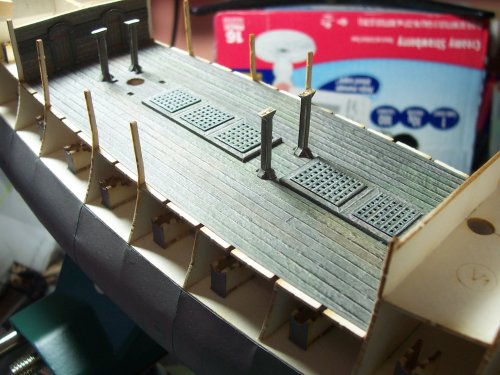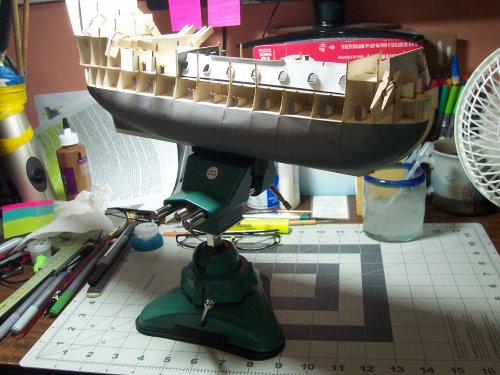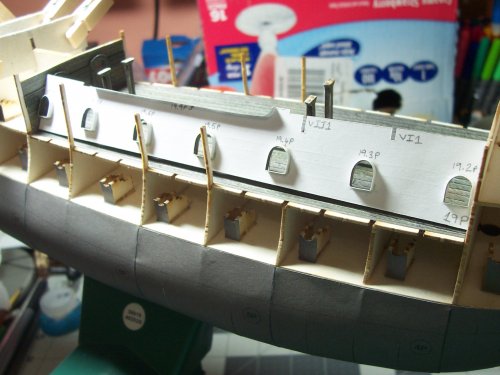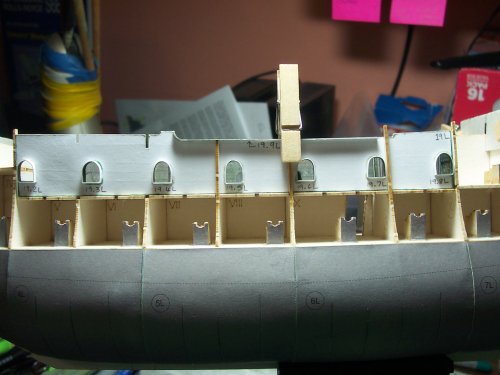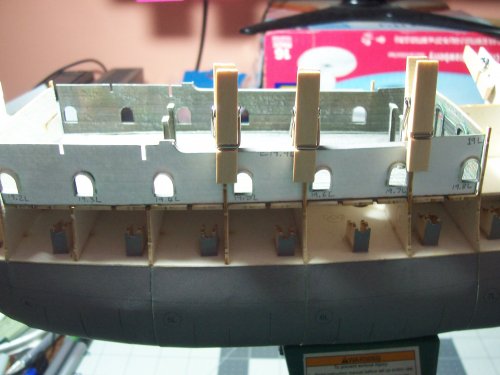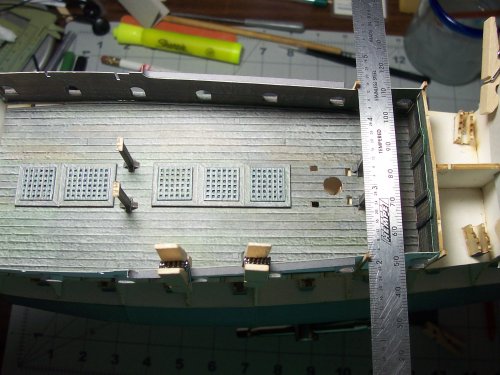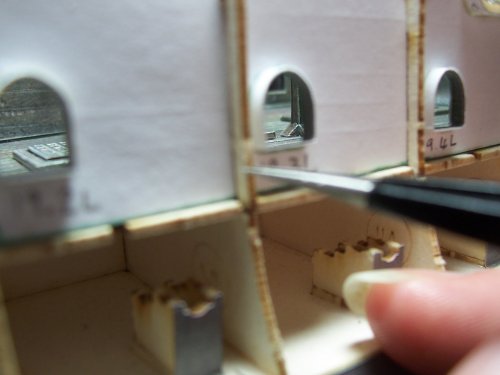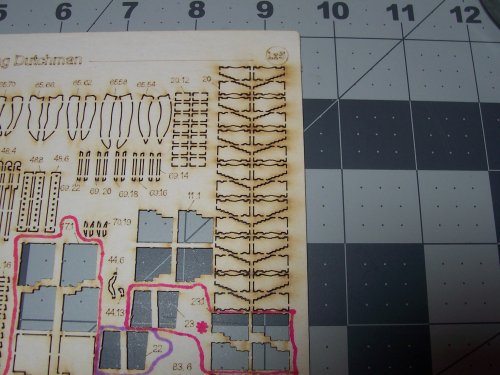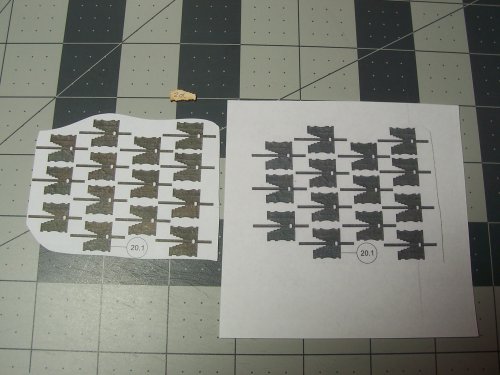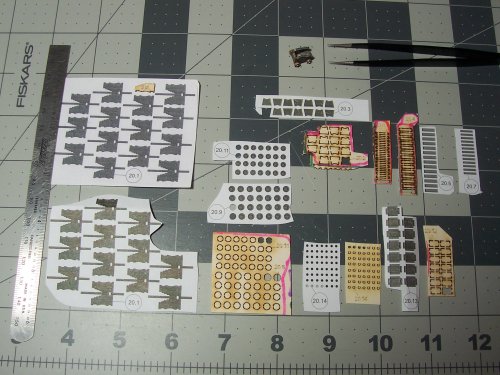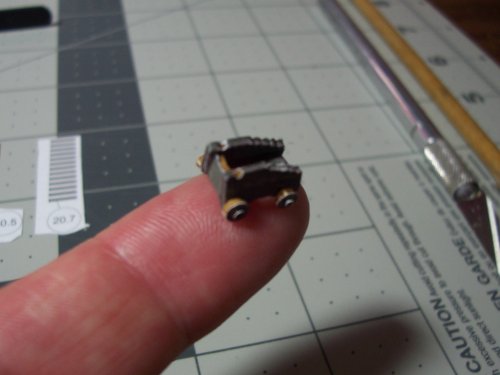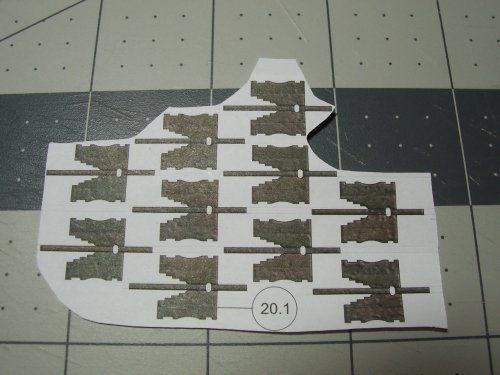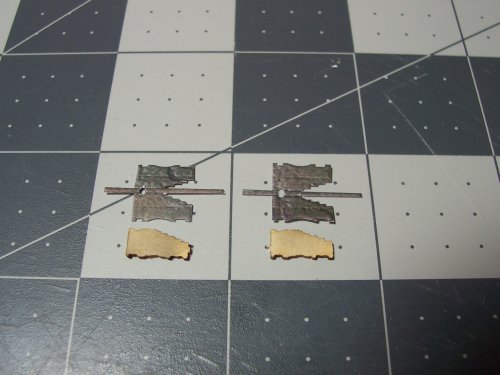Back again  Okay, so far, so good I guess. I can definitely say that the written instructions are not that great, and they do leave out some major assemblies of the model. The images are decent though, thank God!
Okay, so far, so good I guess. I can definitely say that the written instructions are not that great, and they do leave out some major assemblies of the model. The images are decent though, thank God!
The deck cannons are made up from several parts. I found it easier to use different color pens to circle the common numbered areas. Prior to that, my eyes were going crazy trying to find the groupings of the parts.
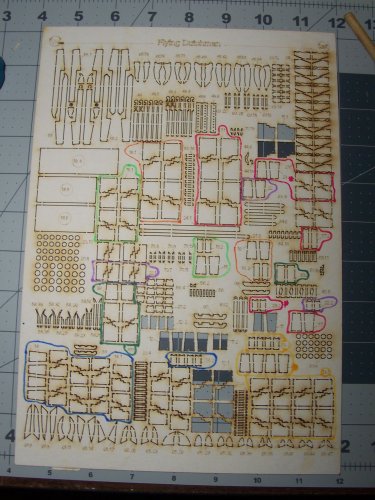
A nice new blade is ideal to separate the parts from the card. In some cases, I had to turn over the sheet and cut from the back too just to make a nice clean job of it.
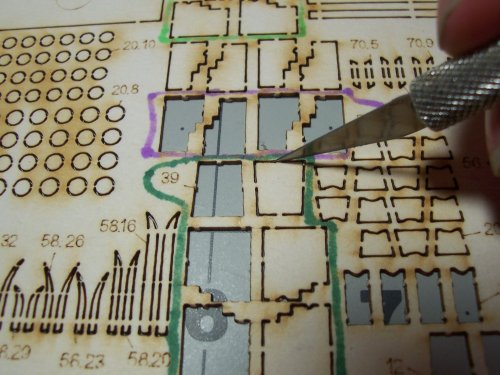
These are the main parts for each of the cannons. There are many different sizes so be sure to mark them with pencil on the base and inside.
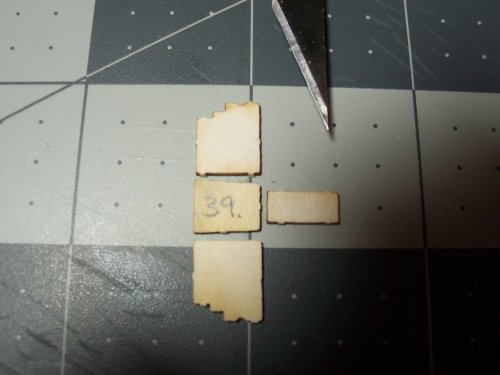
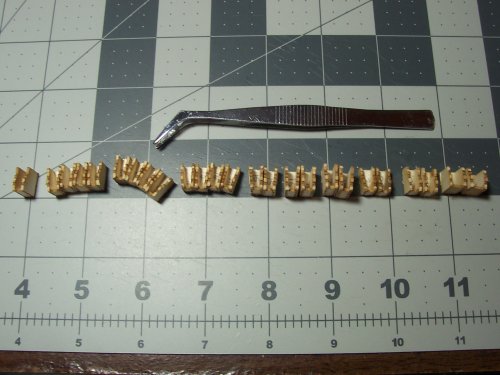
Clean the edges up with a nail sandpaper file and or a soft sandpaper block.
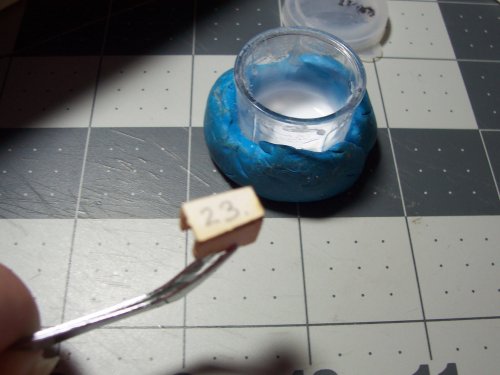
The cannons are in place. It is super-easy to get the direction of the sides wrong, so be careful, and take your time. I had to re-make a couple of the cannons because I had the sides back to front. Thankfully, I hadn't attached them to the deck yet.
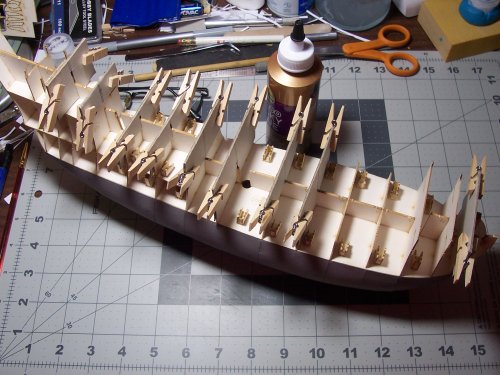
I found out later that there is an additional skin part that goes on the front of the cannon that gives a gray color (see further down the images below). I had to add them after the cannons were glued to the deck, but it would be easier to do it before.
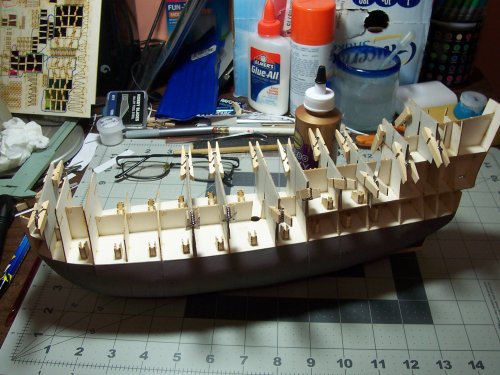
The deck is printed on very thin paper which is nice to cut.
Please be aware that the majority of the ship has to be cutout from the parts. If you opt for the laser cut optional add-on pack, that is just for the main superstructure and is not colored!
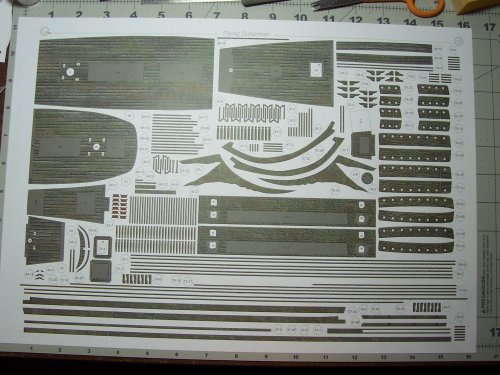
Its better to use spray glue for attaching the decking skins to the deck. This will help to avoid warping of the card. Oh, and you need to brush-up on your Roman Numerals as these are used for the structural parts. As in I II, III, IV, V, and so on.
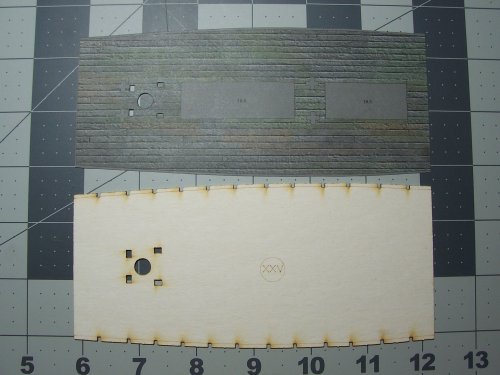
I used Elmers spray glue as it comes in a small can, and I don't think I will need too much overall.
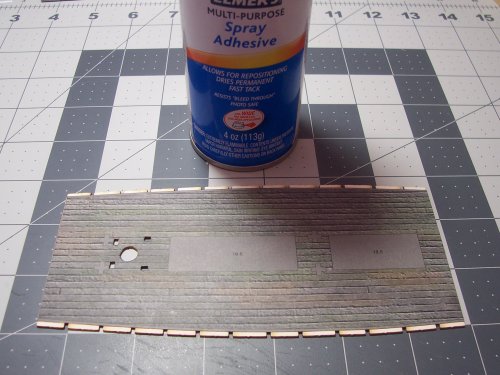
Look at those beautiful lattice covers. You should note too that for every card part with the laser pack option, that there is a corresponding color skin part that must be attached.
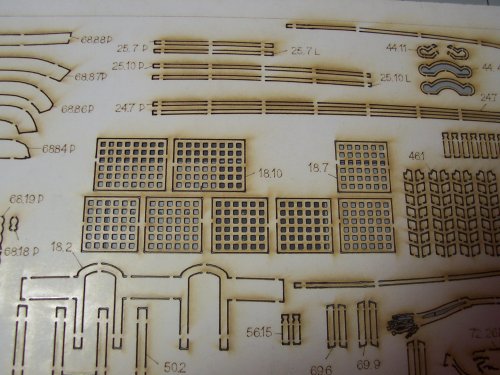
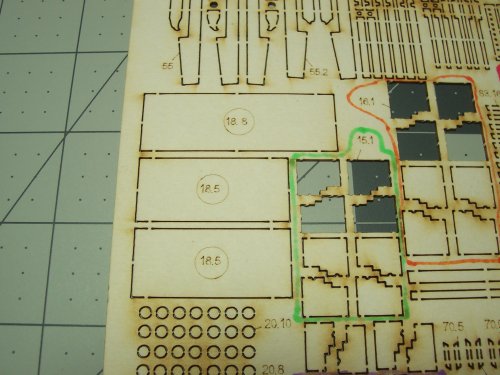
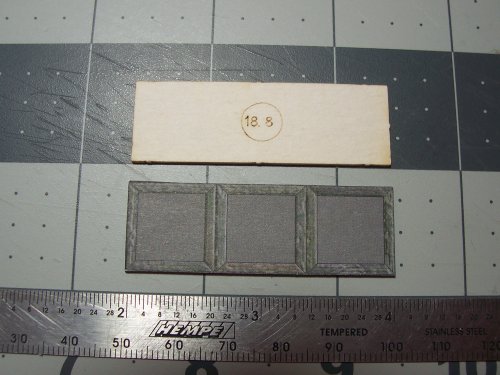
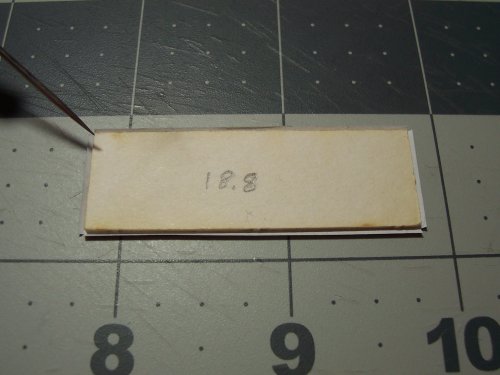
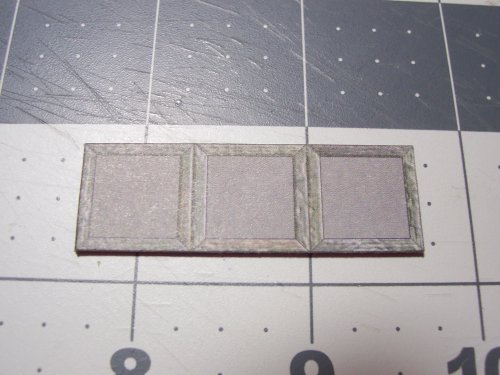
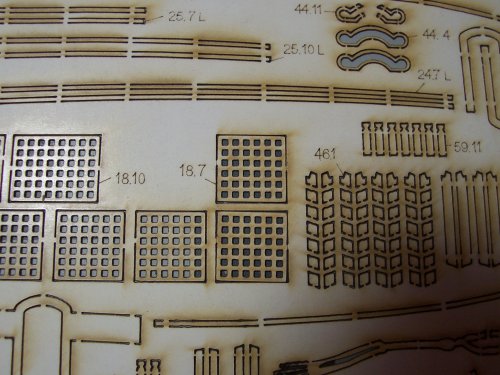
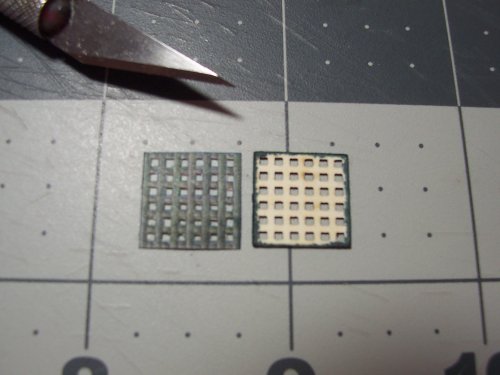
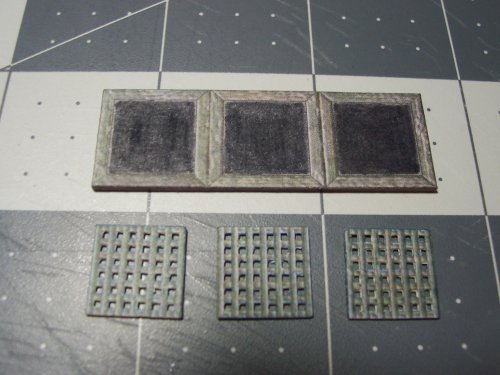
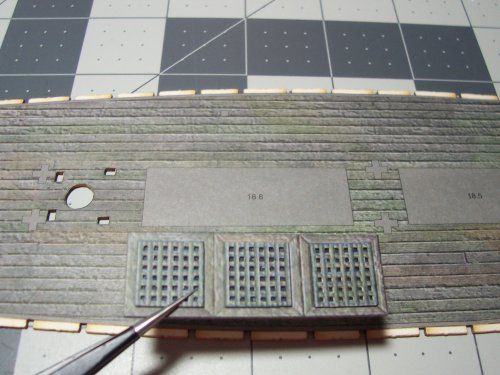
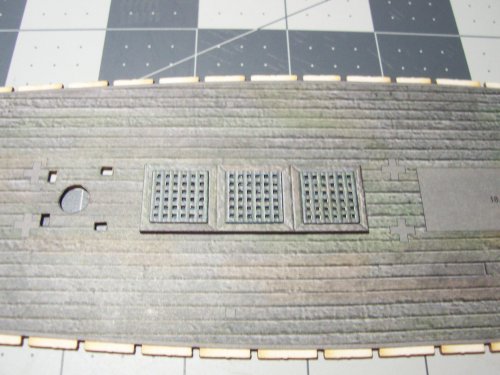
The deck cannons are made up from several parts. I found it easier to use different color pens to circle the common numbered areas. Prior to that, my eyes were going crazy trying to find the groupings of the parts.

A nice new blade is ideal to separate the parts from the card. In some cases, I had to turn over the sheet and cut from the back too just to make a nice clean job of it.

These are the main parts for each of the cannons. There are many different sizes so be sure to mark them with pencil on the base and inside.


Clean the edges up with a nail sandpaper file and or a soft sandpaper block.

The cannons are in place. It is super-easy to get the direction of the sides wrong, so be careful, and take your time. I had to re-make a couple of the cannons because I had the sides back to front. Thankfully, I hadn't attached them to the deck yet.

I found out later that there is an additional skin part that goes on the front of the cannon that gives a gray color (see further down the images below). I had to add them after the cannons were glued to the deck, but it would be easier to do it before.

The deck is printed on very thin paper which is nice to cut.
Please be aware that the majority of the ship has to be cutout from the parts. If you opt for the laser cut optional add-on pack, that is just for the main superstructure and is not colored!

Its better to use spray glue for attaching the decking skins to the deck. This will help to avoid warping of the card. Oh, and you need to brush-up on your Roman Numerals as these are used for the structural parts. As in I II, III, IV, V, and so on.

I used Elmers spray glue as it comes in a small can, and I don't think I will need too much overall.

Look at those beautiful lattice covers. You should note too that for every card part with the laser pack option, that there is a corresponding color skin part that must be attached.












